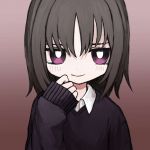Advertisement
Not a member of Pastebin yet?
Sign Up,
it unlocks many cool features!
- At this time Hallstein the Godi lived at Hallsteinsnes on the western shore of Thorskafjord. Although he was a powerful man he was not especially popular.
- [...]
- A man named Kotkel had only recently immigrated to Iceland, along with his wife, Grima, and their sons Hallbjorn Slickstone-eye and Stigandi. They were from the Hebrides, all of them skilled in witchcraft and accomplished magicians. Hallstein had received them on their arrival and settled them at Urdir in Skalmarfjord, where their presence was anything but welcome.
- [...]
- The winter passed without event, but in the spring Thord’s mother Ingunn came from her farm at Skalmarnes to visit him. Thord welcomed his mother warmly. She said she had come to him for help and protection, as Kotkel and his wife and sons were making her life miserable, stealing her livestock and practising sorcery under the protection of Hallstein the Godi. Thord responded at once and said he would not allow these thieves to get away with this even if Hallstein opposed him. He got ready to travel west immediately with Ingunn and nine others to accompany him. He took a ferry from Tjaldanes and they continued west to Skalmarnes.
- [...]
- Thord had all the property there which belonged to his mother loaded on the ferry and ordered men to herd the livestock overland. There were twelve of them aboard the boat, including Ingunn and one other woman. Thord rode to Kotkel’s farm with nine men. Kotkel’s two sons were not at home. Before witnesses, Thord charged Kotkel and his wife and sons with theft and sorcery, an offence punishable by full outlawry. They would have to answer the charges at the Althing. This accomplished he went back to the boat. Hallbjorn and Stigandi returned home just after Thord and the others had set sail, and were only a short distance from shore. Kotkel told his sons what had happened. The two brothers were furious and claimed none of their enemies had ever dared treat them like this. Kotkel then prepared a high platform for witchcraft which they all mounted. Then they chanted powerful incantations, which were sorcery. A great blizzard came up.
- Thord Ingunnarson and his companions at sea felt how the force of the weather was directed at them and the ship was driven west beyond the headland at Skalmarnes. Thord struggled valiantly on board the ship. People on shore saw him throw everything overboard that could weigh the ship down except the travellers themselves. They expected that the ship would be able to make land after that, as they had passed the worst of the skerries, but all of a sudden a breaker rose where no one could ever recall having seen a skerry and rammed the ship so that it capsized at once. Thord and all his companions were drowned and the ship smashed into small pieces, the keel washing ashore on an island which has since been called Kjalarev (Keel Island). Thord’s shield drifted ashore on an island called Skjaldarev (Shield Island). His body and the bodies of his companions drifted ashore directly afterwards and are buried in a mound at Haugsnes (Mound point).
- [...]
- The news of these events spread and was condemned; men capable of such sorcery as Kotkel and his family had performed were considered truly evil. Gudrun, who was pregnant and had only a short time left before she gave birth, was stricken with grief at Thord’s death. She soon gave birth to a boy, who was sprinkled with water and named Thord.
- - The Saga of the People of Laxardal (Laxdæla saga), Chapters 34, 35, and 36
- ----------
- Note: Though other terms are used here, the original text is referrring specifically to a seiðr user. This is because of a translation choice, explained below. The following quotes are taken from the Glossary section of The Sagas of Icelanders: A Selection, the compilation which includes the translation of this source that I've used.
- "magic rite: seiður: The exact nature of magic ritual, or seiður, is somewhat obscure. It appears that it was originally only practised by women. Although there are several accounts of males who performed this rite (including the god Odin), they are almost always looked down on as having engaged in an ‘effeminate’ activity. The magic rite seems to have had two main purposes: a spell to influence people or the elements (as in The Saga of the People of Laxardal, chs. 35–7, and Gisli Sursson’s Saga, ch. 18), and a means of finding out about the future (as in Eirik the Red’s Saga, ch. 4). There are evidently parallels between seiður and shamanistic rituals such as those carried out by the Lapps and Native Americans. See also seeress.
- "magician: seiðmaður: Literally means ‘a man who practises seiður’. See also magic rite."
Advertisement
Add Comment
Please, Sign In to add comment
Advertisement

